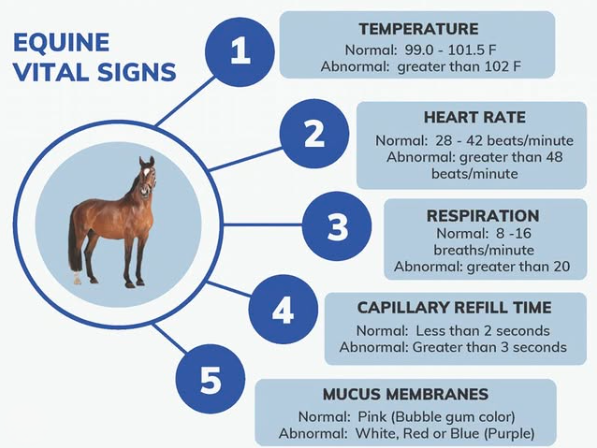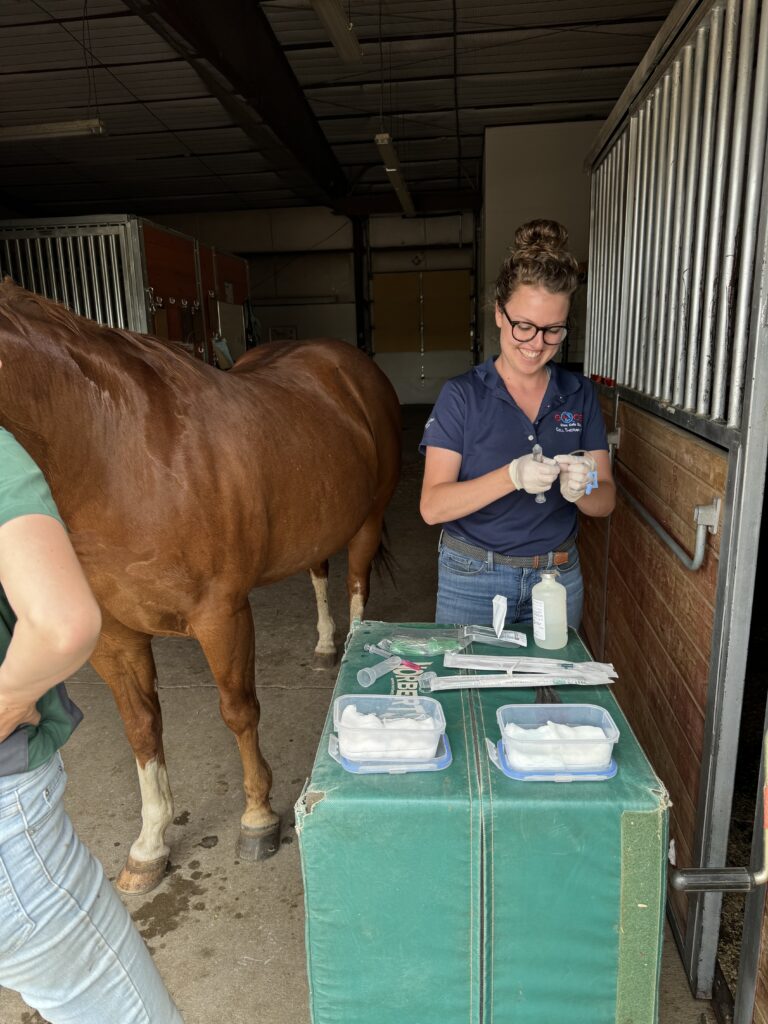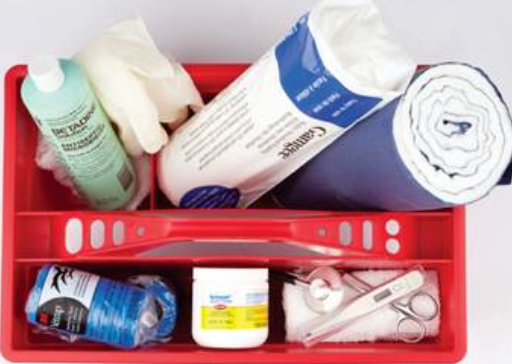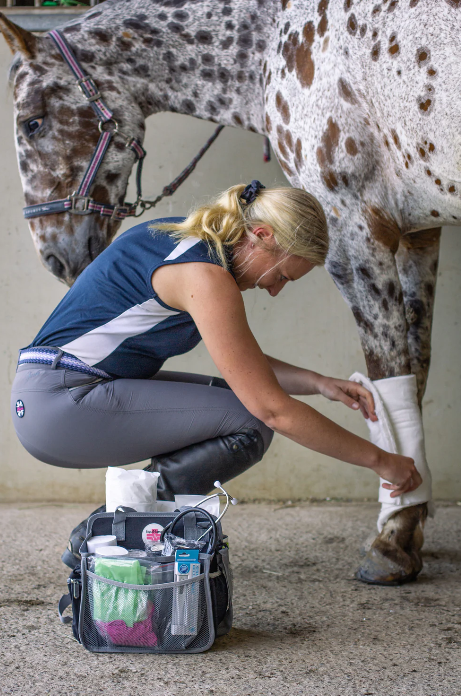Remember, sick or injured horses are not always easy to handle. Protect yourself as well as your horse!
Normal Vital Signs:
- Temperature: Adult 98.5-101.5 Foal 99-102.5 F
- Heart Rate 28-44 beats per minute
- Gum Color Pink to pale pink (bright red, white or purple gums may indicate a problem)
- Capillary Refill Time < or = 2.0 seconds
- Gut Sounds Several per minute
- Respiratory Rate 12-16 breaths per minute
First Aid Kit:
- Stethoscope
- 6 ml Syringes
- Thermometer
- Sterile Telfa non-stick pads
- Flashlight
- Phenylbutazone
- Vetrap
- Chlorohexidine Scrub
- Gauze roll and sponges
- 30 mls of Banamine liquid or paste
- Elastikon
- Alcohol prep wipes
- Bandage scissors
- White tape
- Exam gloves
- Sterile saline
- Rolled leg cotton (Rediroll)
When to Call a Veterinarian:
- Temperature above 101.5
- Injury to over a joint or over the back of a horse’s lower leg
- Noticeable lameness or non-weight bearing lameness
- Nosebleed
- Colic
- Foamy discharge from wound
- Horse with no appetite/not eating
- Any time you have questions or concerns!
Wound Care Before Your Vet Arrives:
- Hose off wound and surrounding area.
- Cover wound with non-stick pad, wrap gauze roll around the pad to keep it in place. Do not pull on the gauze tightly as you can restrict blood flow to underlying tissues.
- Apply Rediroll over gauze and wrap tightly with vetwrap or polo wrap over Rediroll
- If blood seeps through bandage, leave bandage on, put another layer of vetwrap or polo wrap on and be sure to tell your vet
What to do if you Think Your Horse is Colicing:
- Walk your horse until your vet arrives
- Do not give any medications before speaking to your vet.
- Do not give any food (including grass, hay, grain, mash). Water is always ok!
How to Take Your Horse’s Temperature:
- Lubricate the thermometer with Vaseline, water or saliva
- Stand to the side of your horse’s hip, close to the stifle area (this will reduce your chances of being kicked). Gently slip the thermometer into the rectum, aiming it slightly upward so it follows the contour of the rectum.
- Leave the thermometer in place until it beeps
How to Take Your Horse’s Pulse and Heart Rate:
- Run your fingers along the bottom of the jaw bone until you find the artery, which feels like a small cord.
- Put light pressure on the artery with your finger (this can be difficult).
- Count the horse’s pulse for 15 seconds, then multiply by 4 to get the number of beats per minute.
- Another place to check the heart rate is just inside the horse’s left elbow, over the heart itself, using your stethoscope.
How to Take Your Horse’s Respiratory Rate:
- Stand next to your horse’s tail and watch its flanks
- When the horse breathes in, their rib cage will expand and the belly drops. When they exhale, the belly comes up as air is pushed out.
- Count either as the horse inhales or exhales, but not both.
- Count the respiration for 60 seconds for the breaths per minute. Or listen with your stethoscope just between the horse’s left elbow and their chest.




